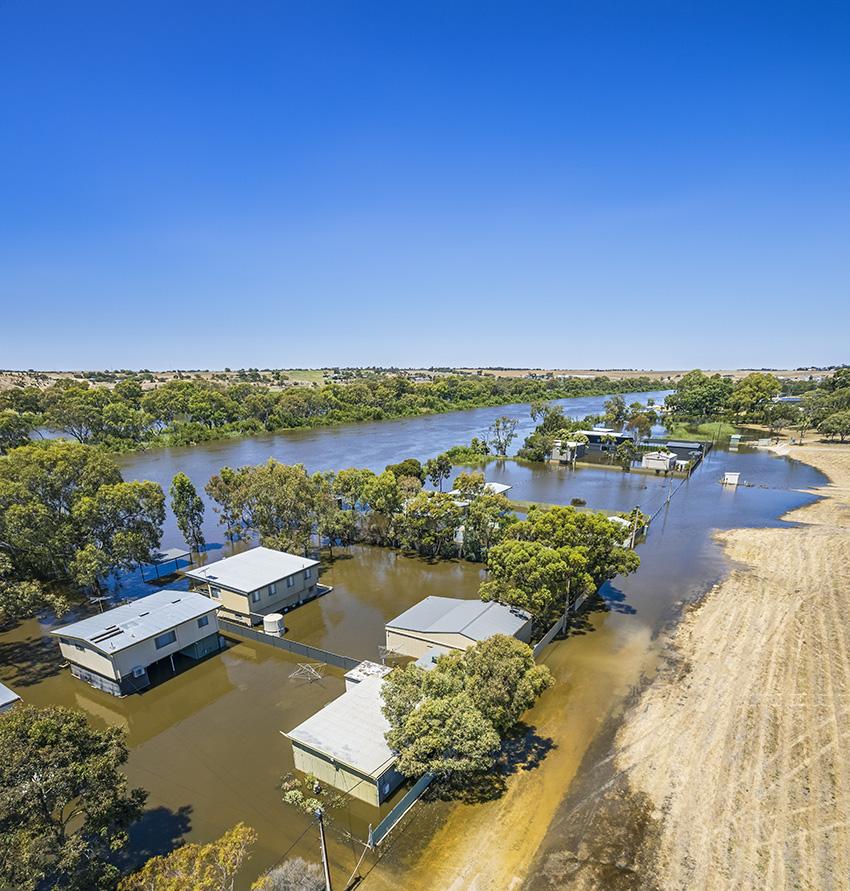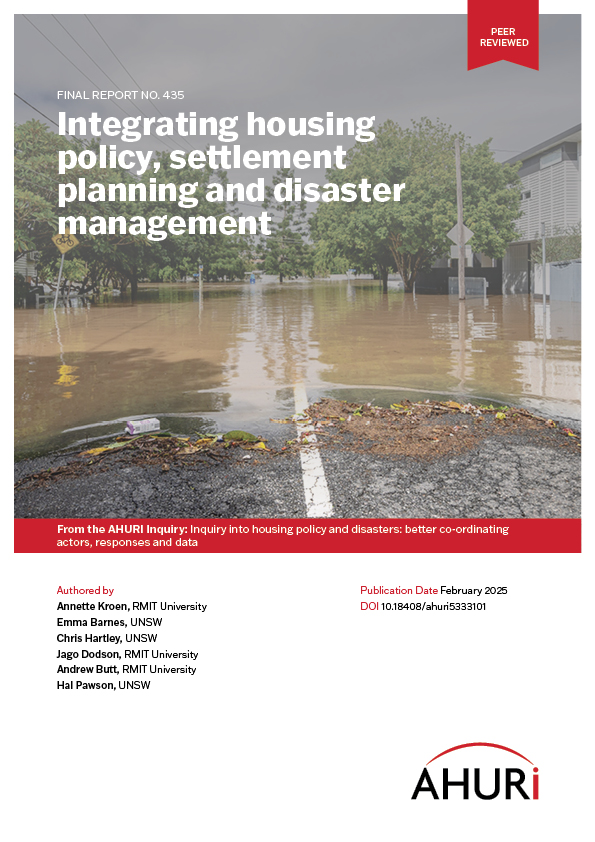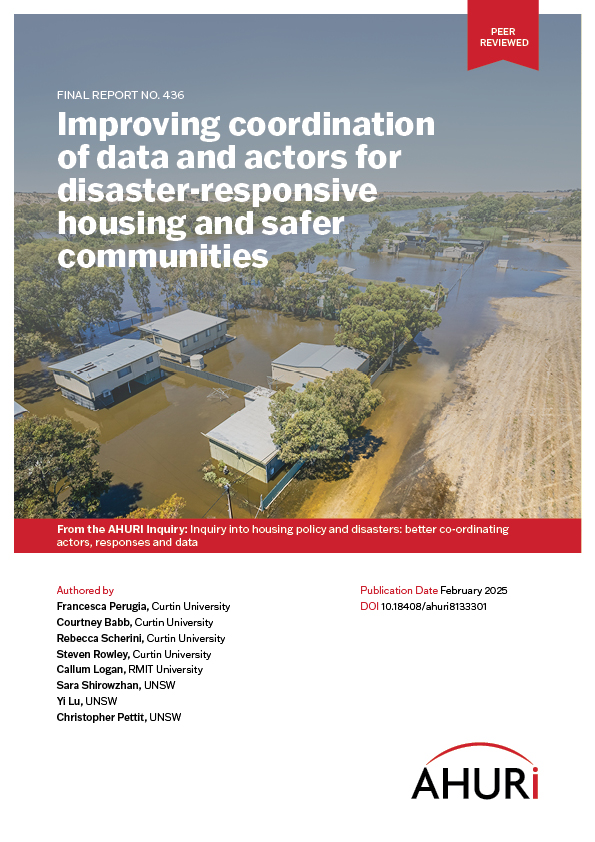
More natural disasters mean Government housing policies need to adapt
19 Feb 2025
Natural disasters like floods, fires and cyclones already destroy many Australian homes, and climate change will make this worse. Two new AHURI research reports examine how government housing policies can better prepare for natural disasters, and how governments can share housing data to lower disaster risks.
Private renters are most vulnerable to natural disasters
'Our research found private renters are most vulnerable to disasters', says Dr Annette Kroen from RMIT University, who led one research project. 'They often live in lower-quality housing, earn less money and lack insurance. Many renters struggle to find temporary homes because most support programs don't include them.'
Temporary housing helps families return to normal life. Support might be needed for years while permanent homes are rebuilt. ‘The quality, cultural fit and location of temporary housing matter greatly for recovery’, says Dr Kroen.
Proper Planning is crucial for reducing disaster risks
Good planning can stop building in dangerous areas, guide house design and help emergency responses. However, it's hard to balance lowering risks while meeting economic and social needs.
'Take "managed retreat" policies, where households or whole communities are moved from high-risk to safer areas', says Dr Kroen. 'It's often politically difficult and rarely popular because of its emotional impact on families.'
Housing and planning agencies need better awareness of disaster risks, and risk reduction needs to be a bigger focus in planning rules.
Fragmented data increases disaster risks
The second research project, led by Dr Francesca Perugia from Curtin University, highlights that disaster-related data is very fragmented, making it even more difficult to manage disaster risks.
'The data exists but is scattered across various government departments and private companies—often in different formats that don't align’, says Dr Francesca Perugia. 'This lack of coordination makes it more difficult to assess disasters and to plan for future risks.’
The research found significant gaps in how flood, bushfire and cyclone data is recorded across states and sectors, because there is no standardised approach to recording the information.
‘The lack of coordinated data is a barrier to designing policies to reduce risks. Government agencies often operate in silos, creating a dangerous disconnect between disaster planning and housing policy. As a result, planning systems can’t keep up with new risk data. This holds back the development of housing that is more disaster resilient,’ says Dr Perugia.
The research shows there is an urgent need for coordinated data systems that bring together data from across all levels of government and the private sector.
The research suggests a range of policy solutions
The two research projects suggest several improvements, including:
- creating planning policies that consider natural disaster effects
- ensuring temporary housing programs are adequate
- including private renters in recovery programs
- including communities in disaster planning
- improving teamwork between government and other organisations to ensure they have access to high quality data.
The research was covered in two reports:
- ‘Integrating housing policy, settlement planning and disaster management’ was undertaken by researchers from RMIT University and UNSW.
- ‘Improving coordination of data and actors for disaster-responsive housing and safer communities’ was undertaken by researchers from Curtin University, RMIT University and UNSW.


